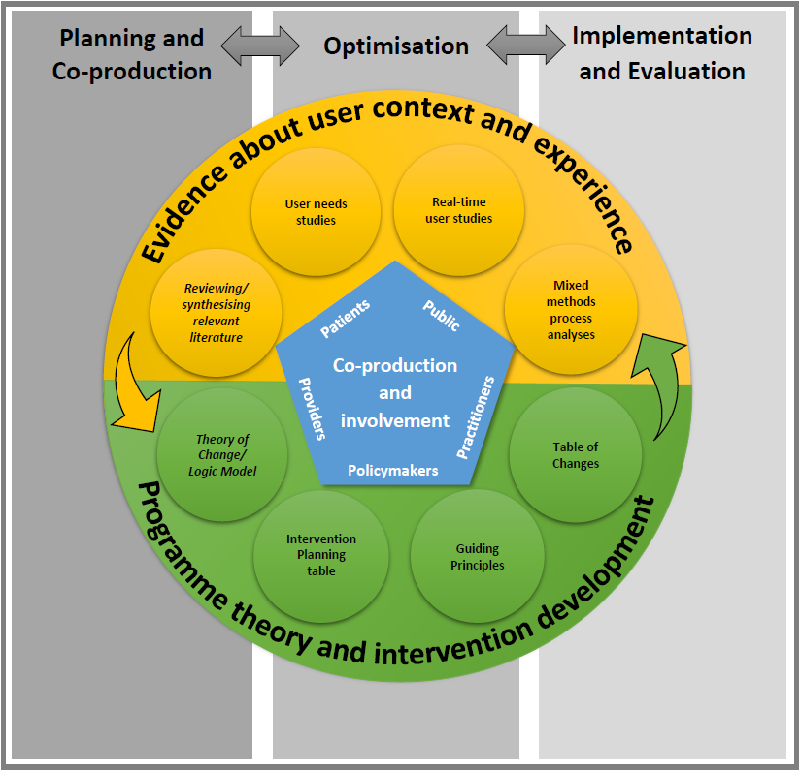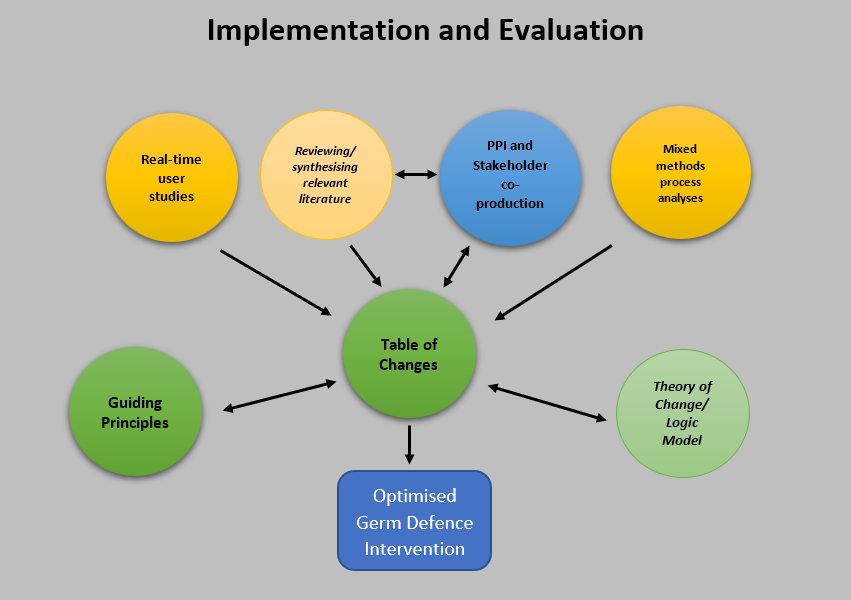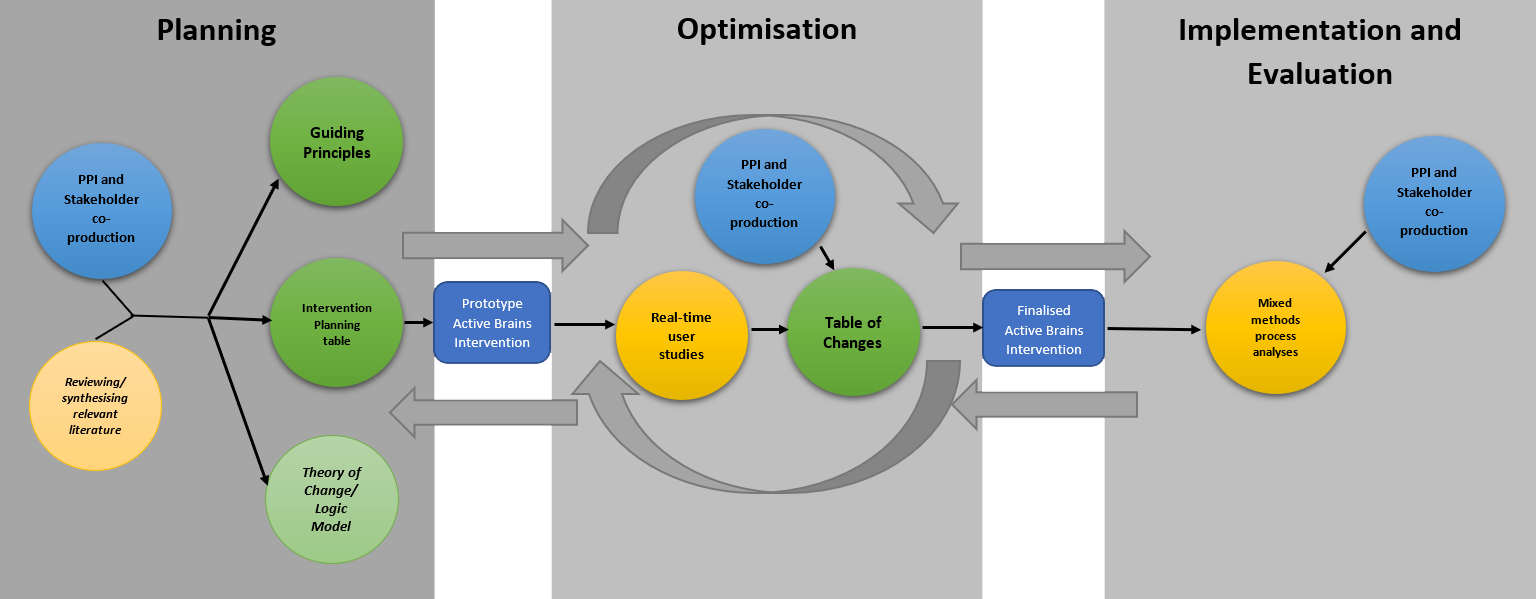The Person-Based Approach
The diagram below gives an overview of the Person-Based Approach.
Click on the different parts of the diagram to learn more about each element.
For demonstrations of ways the PBA can be used, see the examples at the bottom of the page.


For more information about the implementation and evaluation of the Germ Defence intervention see:
Morton, K., Ainsworth, B., Miller, S., et al.. (2021). Adapting Behavioral Interventions for a Changing Public Health Context: A Worked Example of Implementing a Digital Intervention During a Global Pandemic Using Rapid Optimisation Methods. Frontiers in Public Health, 9, 369, https://doi.org/10.3389/fpubh.2021.668197. Cite.

For more details about the planning and optimisation of the Active Brains intervention see:
Essery, R., Pollet, S., Smith, K., et al., (2021). Planning and optimising a digital intervention to protect older adults’ cognitive health. Pilot and Feasibility Studies, 7(1), [158]. https://doi.org/10.1186/s40814-021-00884-2. Cite.
For more information about the implementation and evaluation of the Active Brains intervention see:
Smith, K., Bradbury, K., Essery, R., et al., (2020). Active Brains - a digital intervention to reduce cognitive decline in older adults: protocol for a feasibility randomised control trial. JMIR Research Protocols, 9(11), [18929]. https://doi.org/10.2196/18929. Cite.
